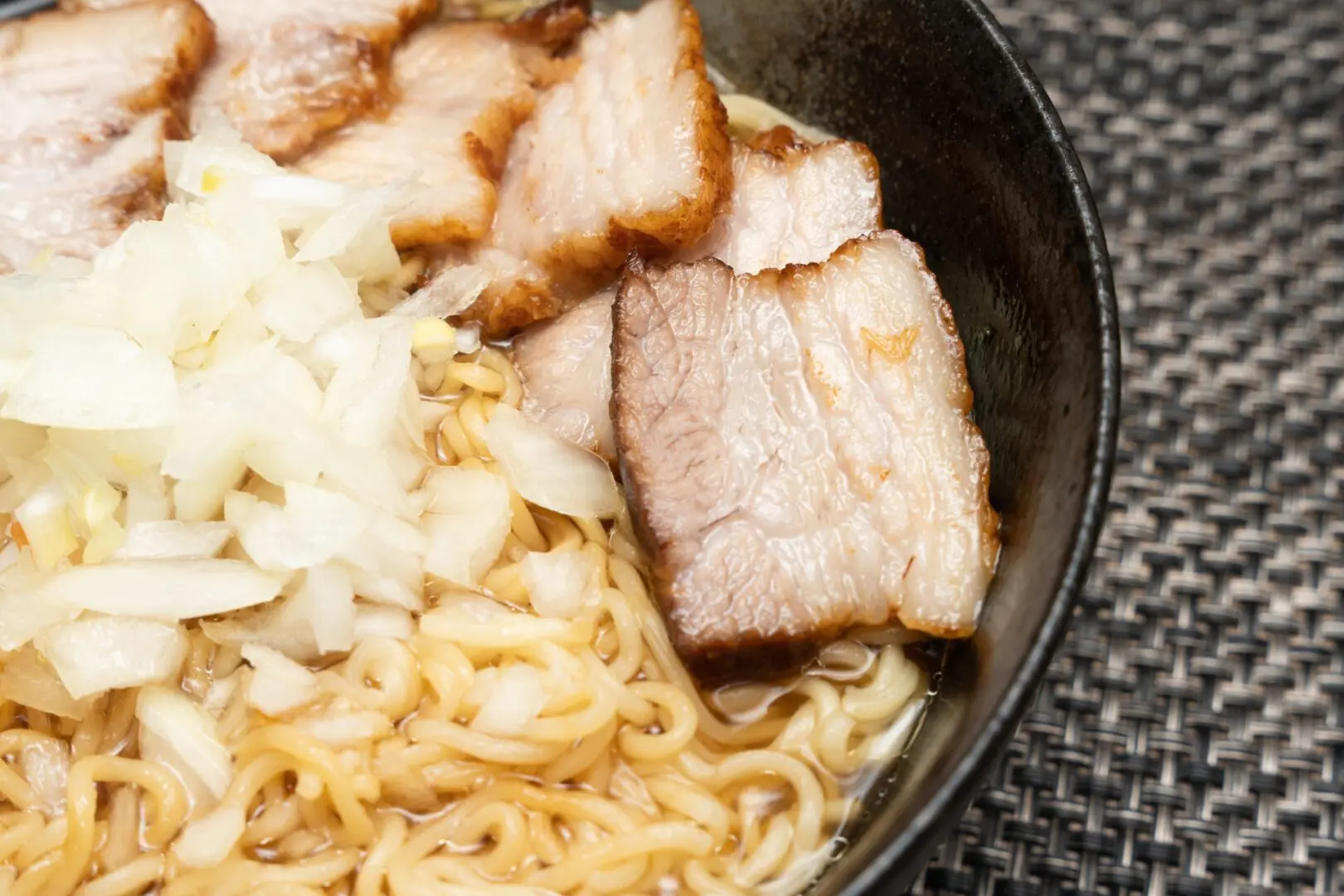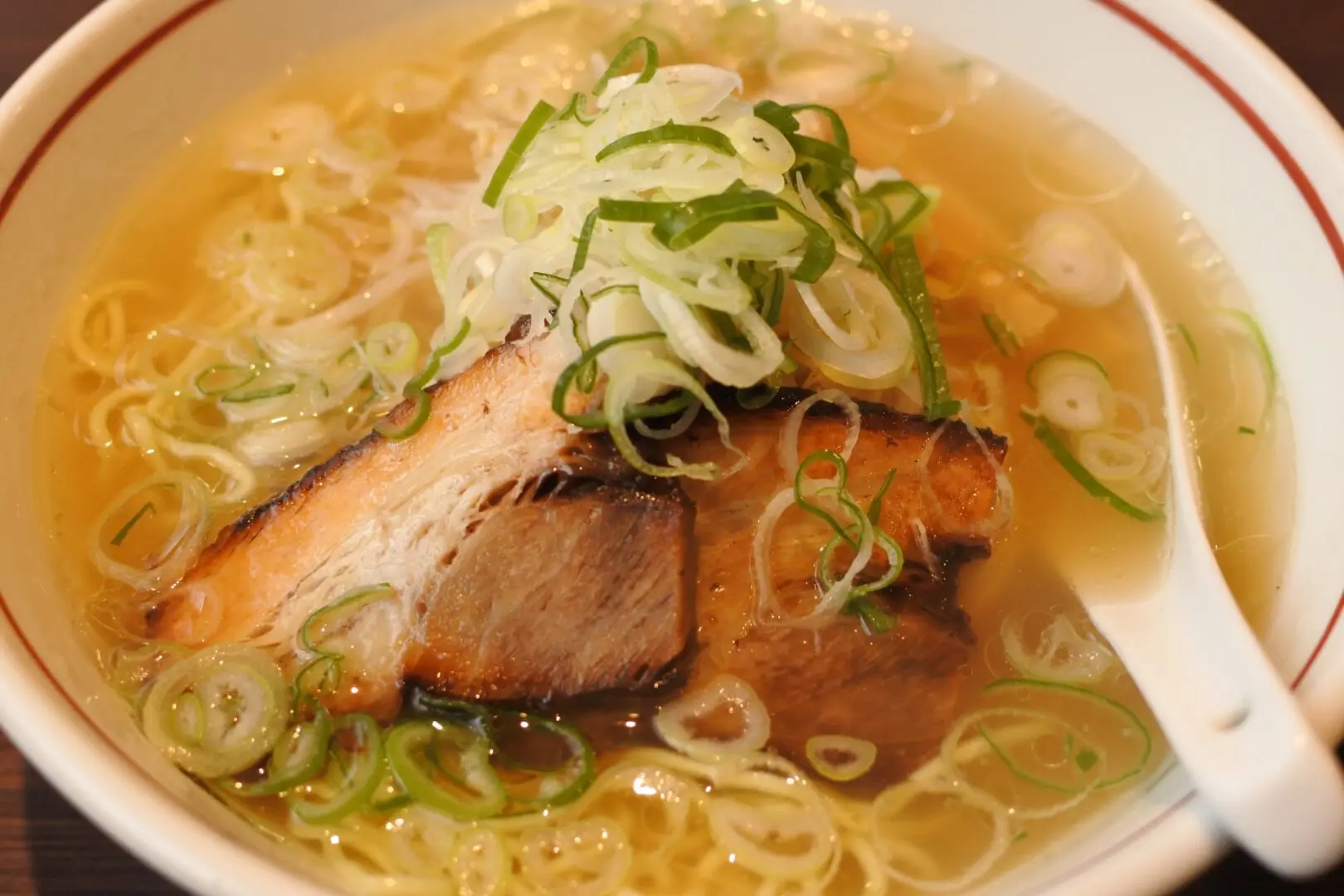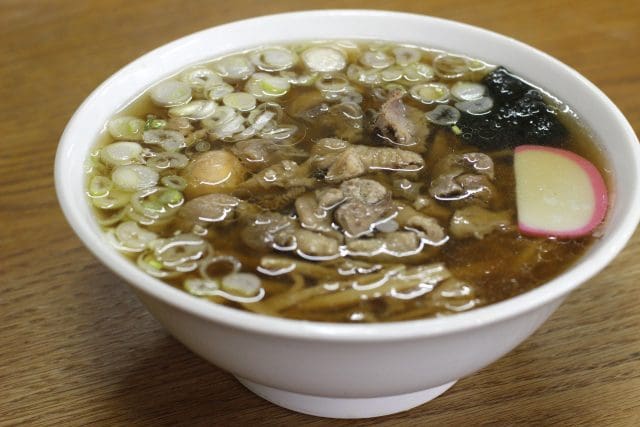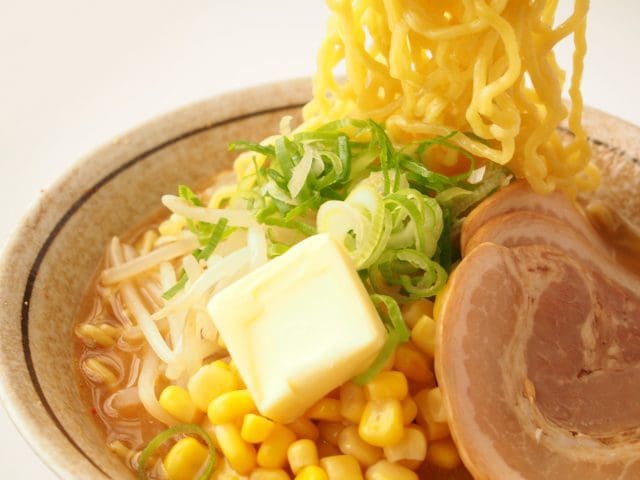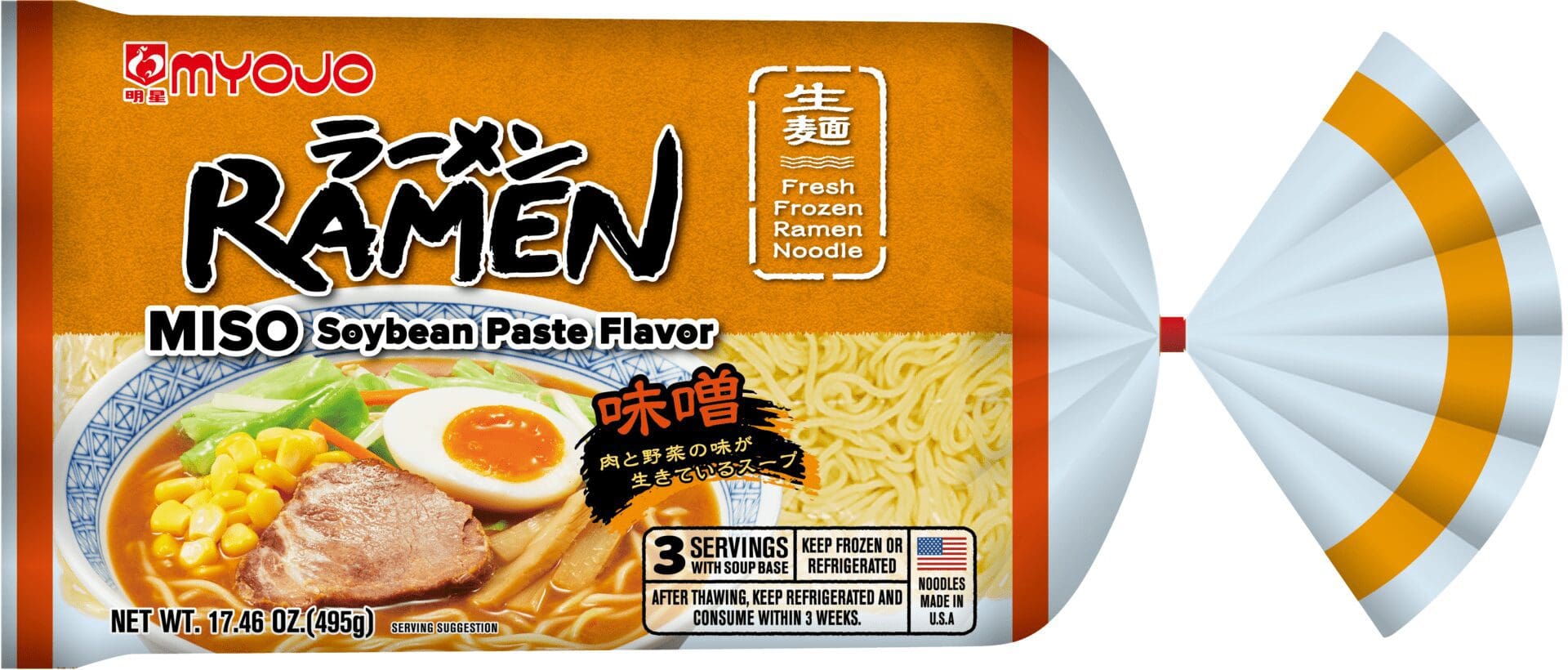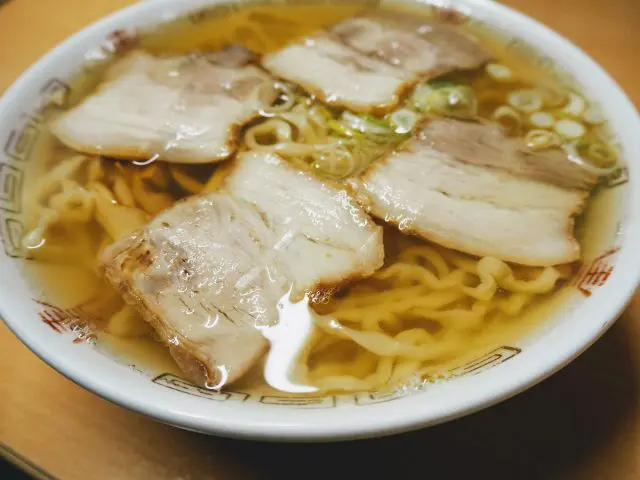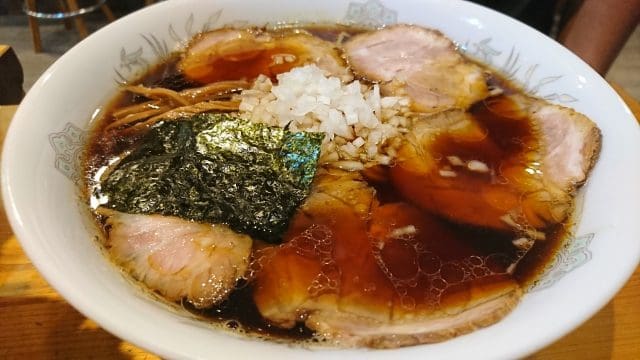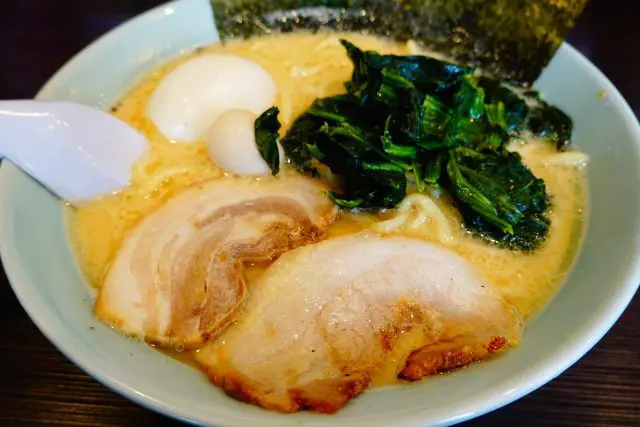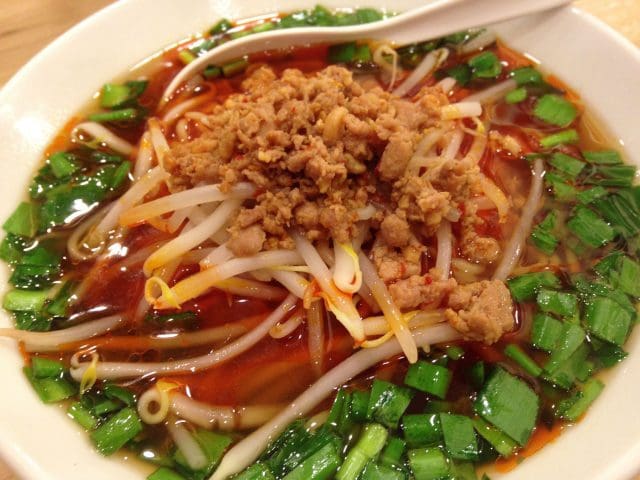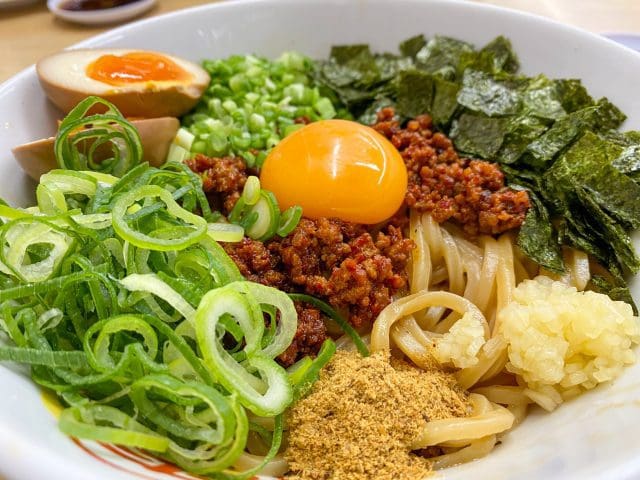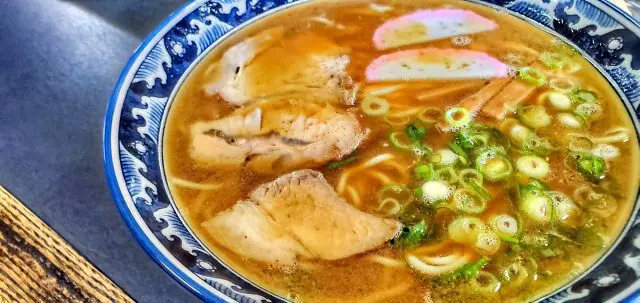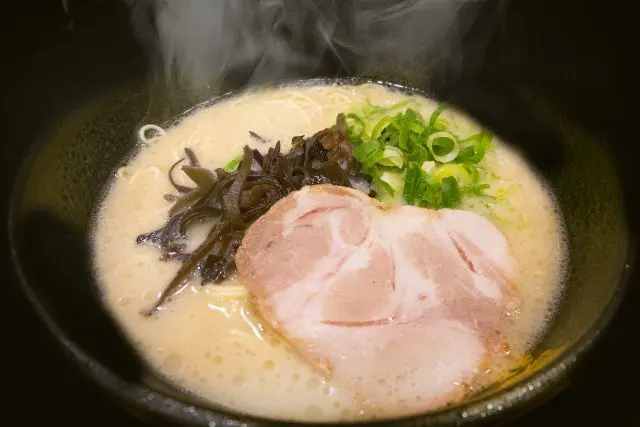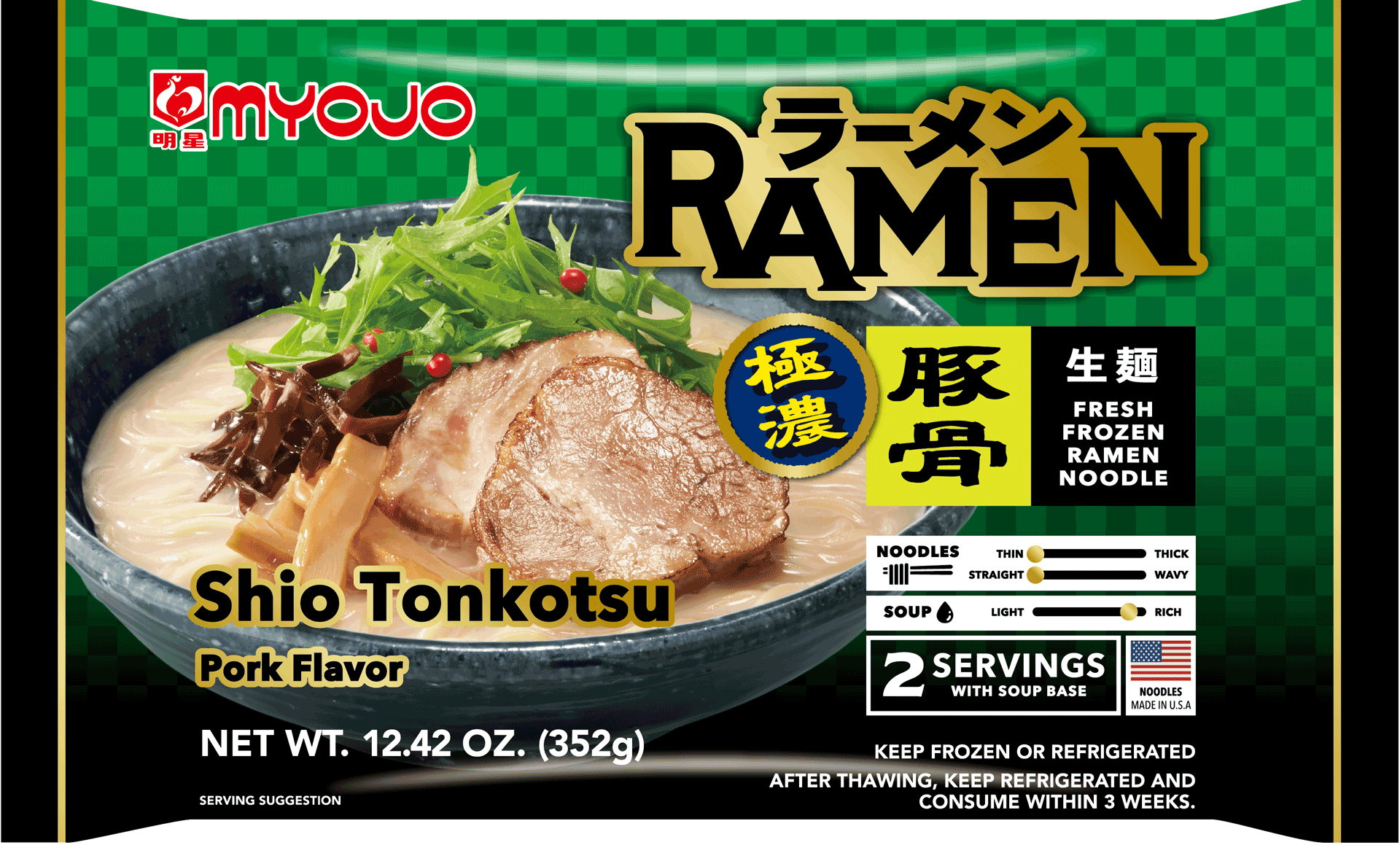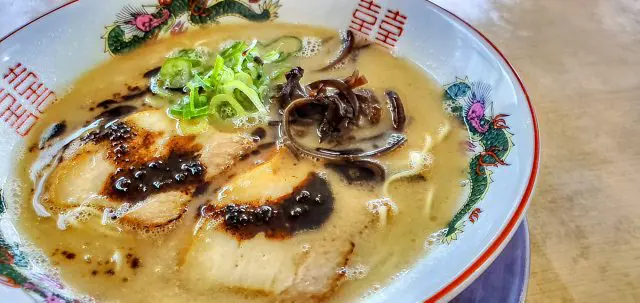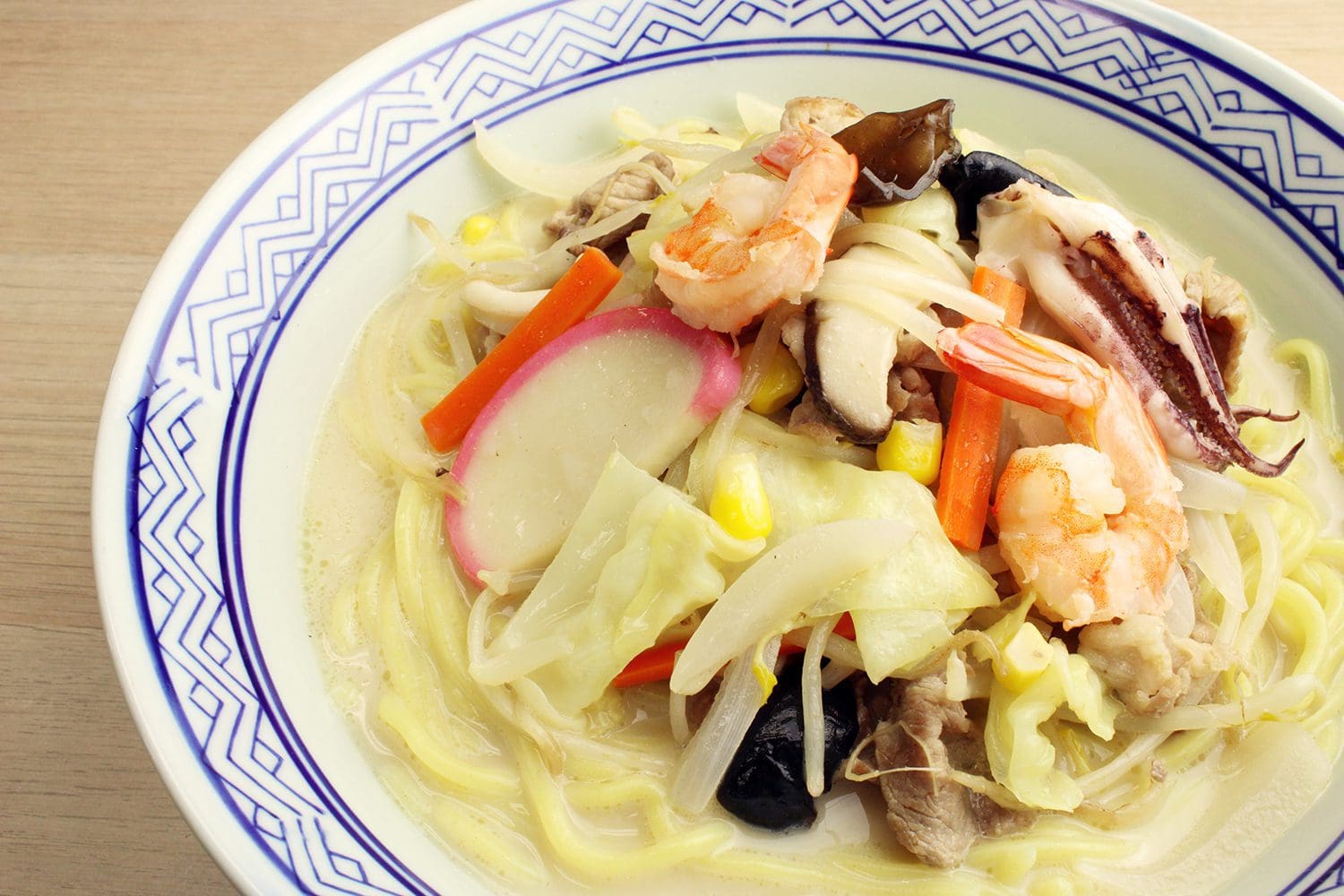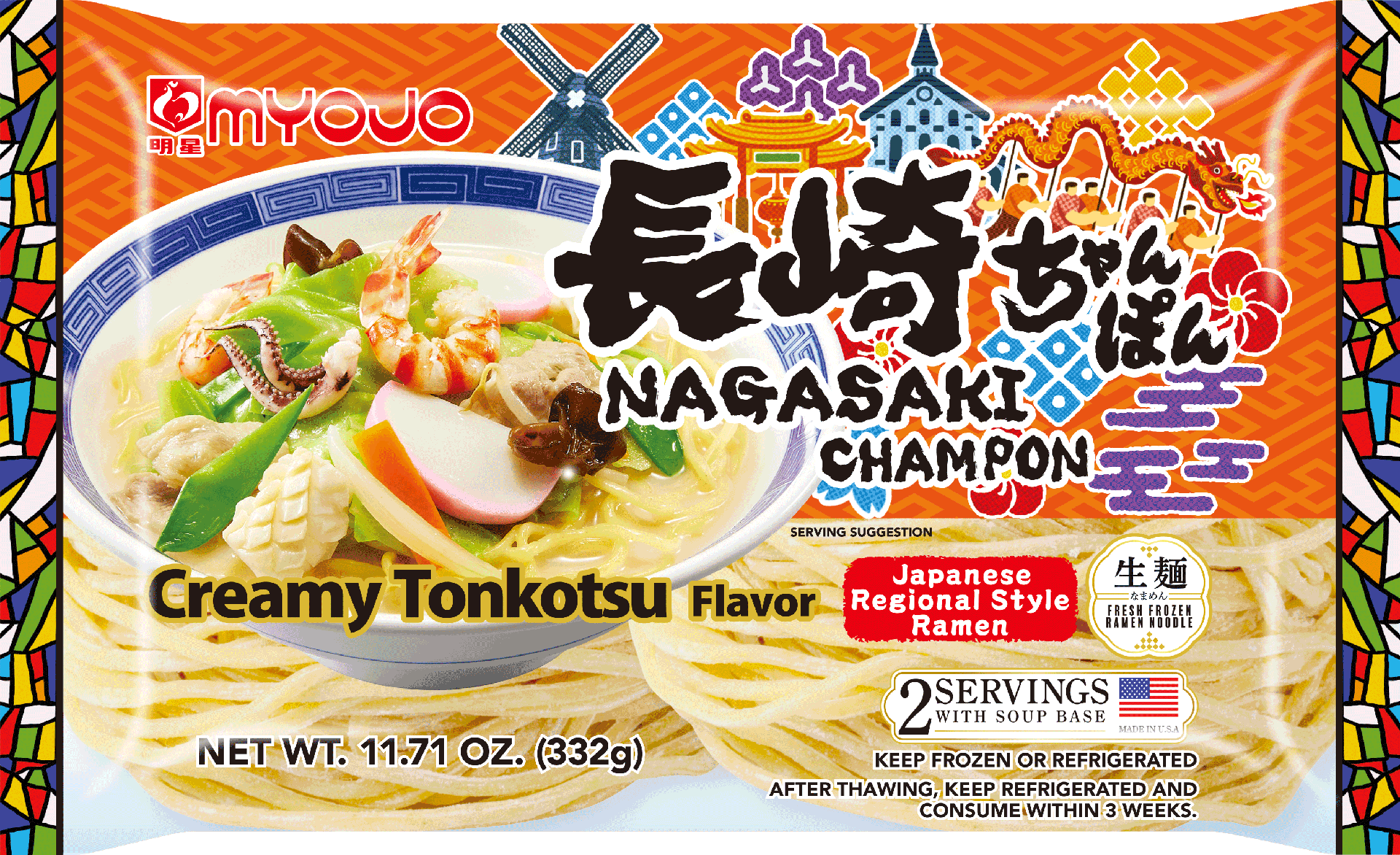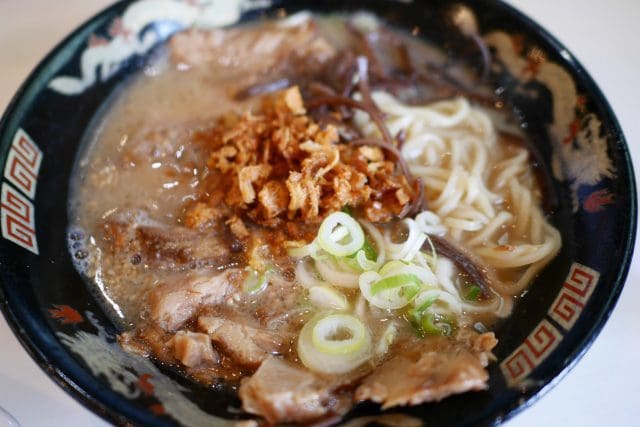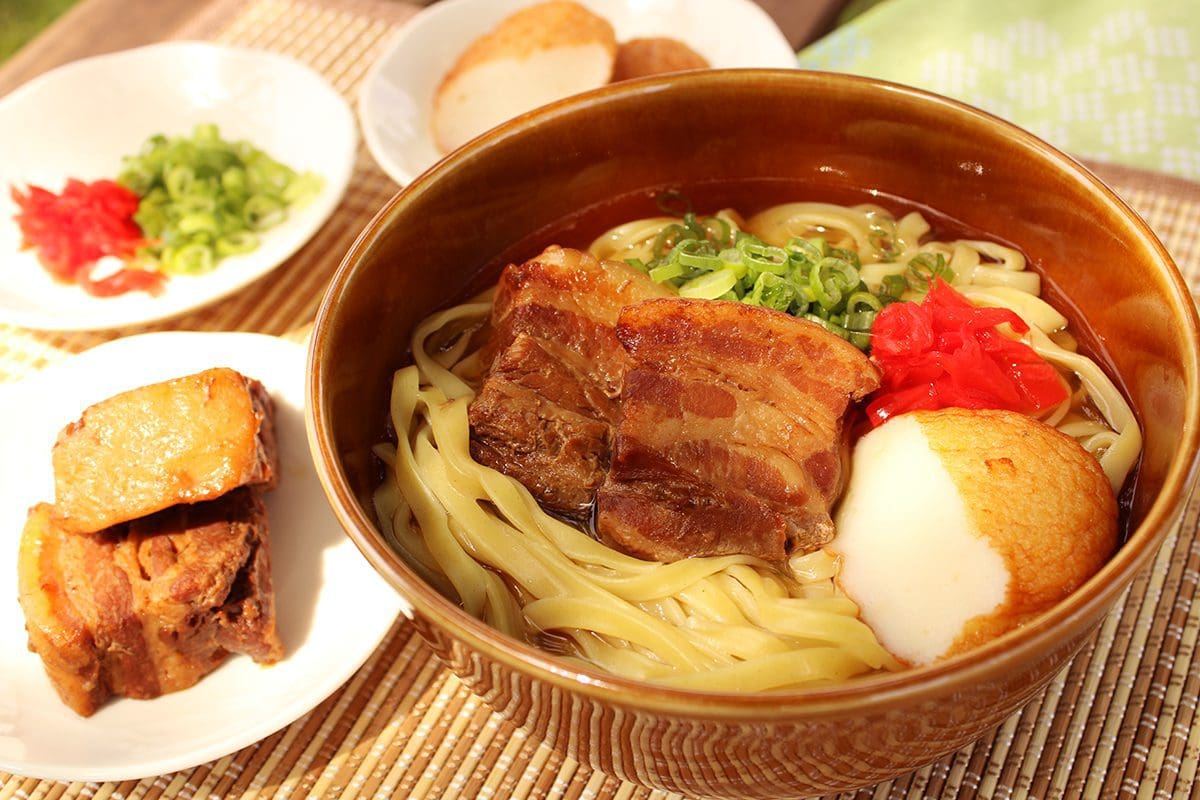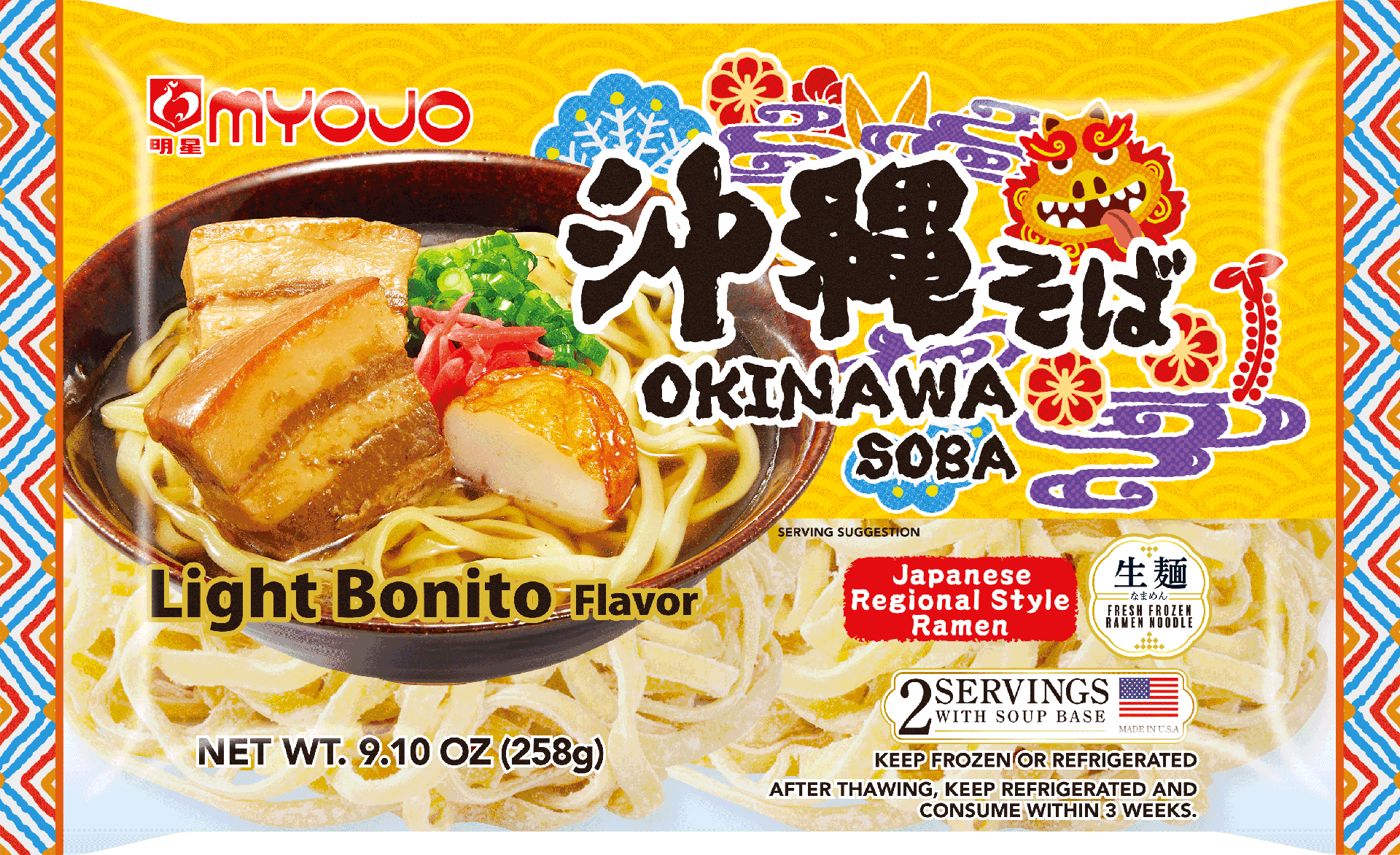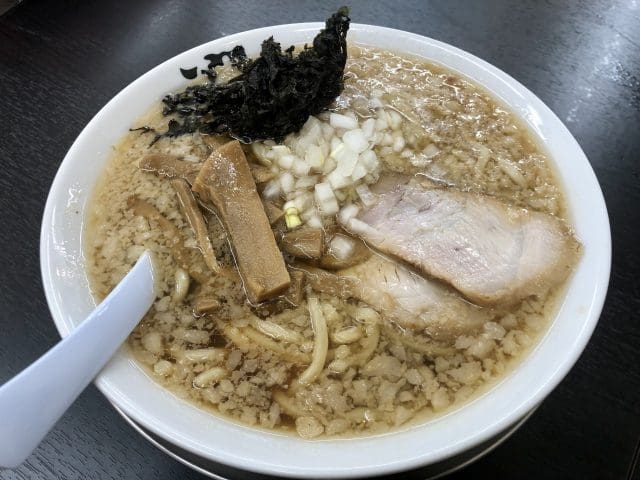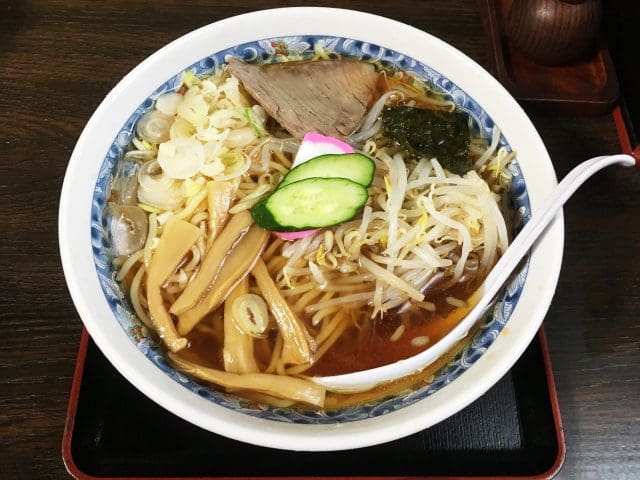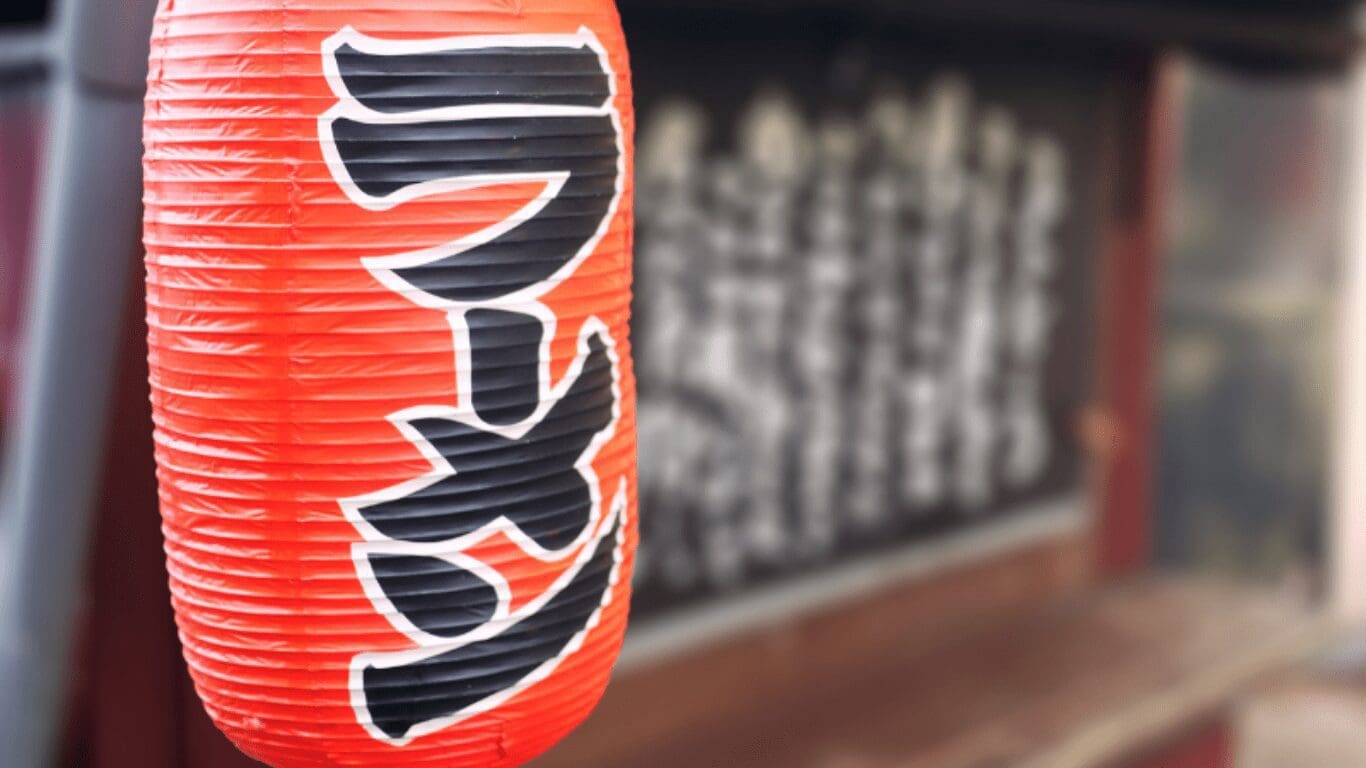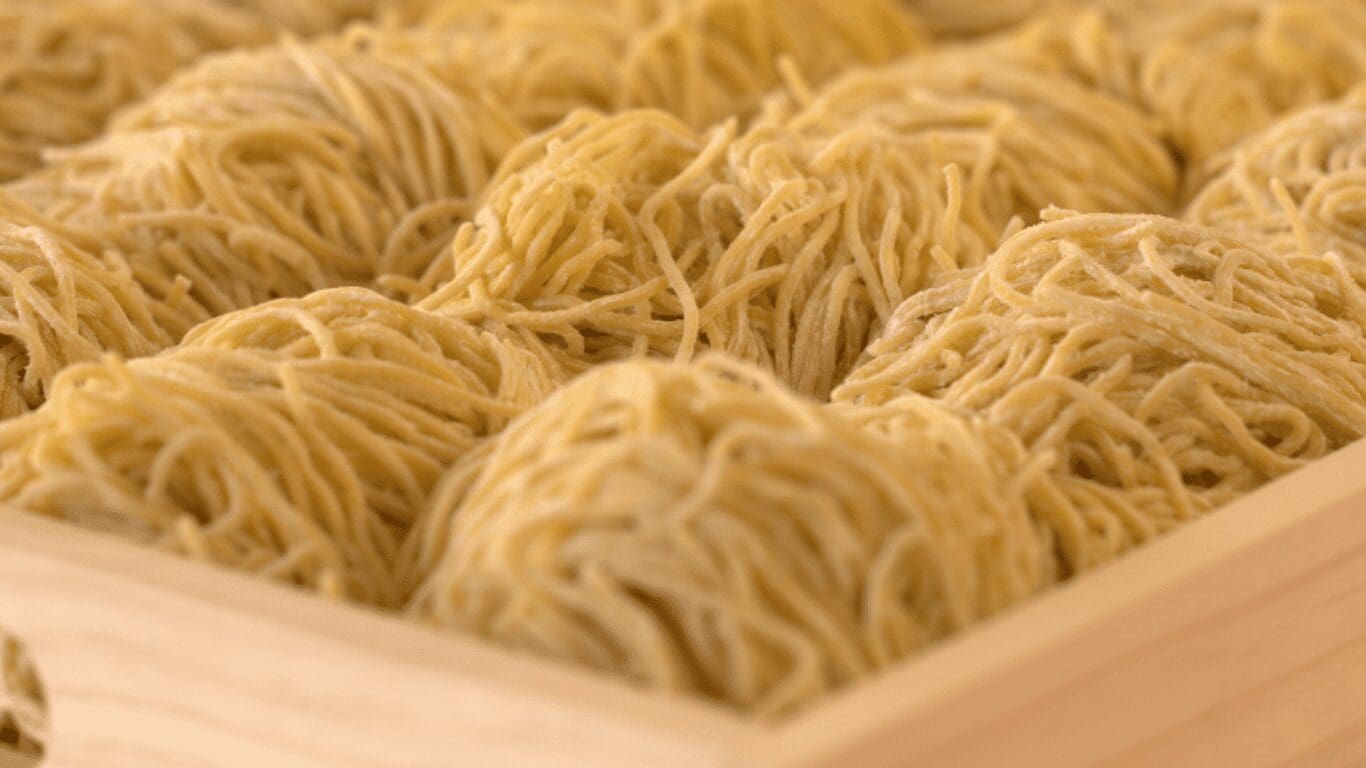How Many Do You Know? The Profound World of Regional Ramen
Published: Feb 9, 2022/ Last Updated:Feb 10, 2022
- 16 min read
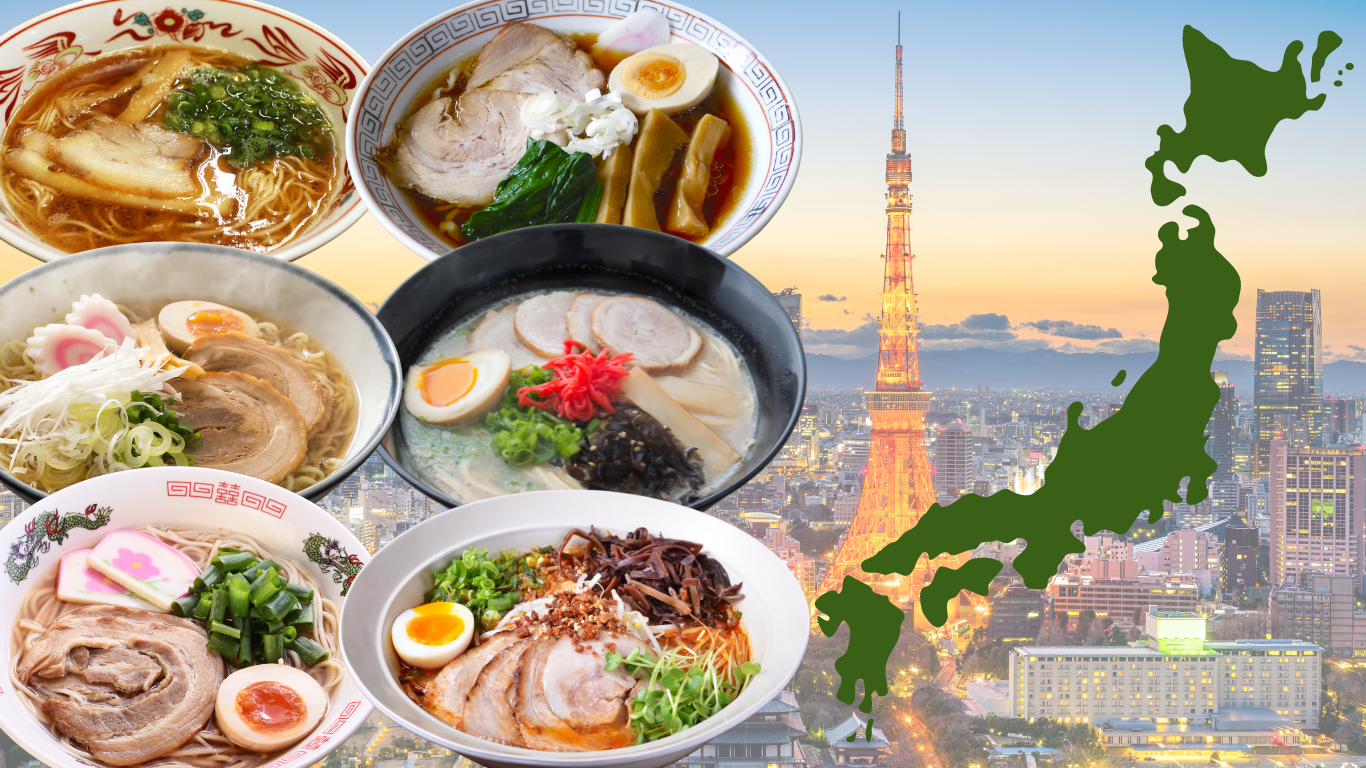
If you are familiar with ramen, you probably know that there are four main flavors: tonkotsu, soy sauce, miso, and salt. In addition to these flavors, there is another category in Japan called “regional ramen” in which the dish is influenced by a region. Just as there is a big difference in style between a New York pizza (Thin Crust Pizza) and a Chicago pizza (Deep Dish Pizza), there are several styles of ramen in Japan that have changed according to the ingredients and tastes of the regions in which they are served. Even Japanese people find it difficult to grasp the variety of ramen, but if you are a fan of the noodle dish and want to explore it in detail, you cannot avoid the importance of local taste. In this article, we have gathered information that will guide you to best enjoy and understand the taste of different regional ramen. We hope it will be of some help in expanding your ramen palette.
- Index
- How Was “Regional Ramen” Born?
- Regional Ramen You Can Eat in the U.S.
- Regional Ramens That You Must Try When You Come to Japan
- Conclusion
■How Was “Regional Ramen” Born?
As previously mentioned, most ramen dishes tend to reflect the characteristics of the region, supplying new and unique variations on the classic noodle soup. Factors of change in cuisine include regional ingredients, climate, and taste preferences of the local population. Ramen in Japan is no exception and many variations have been created based on these factors. However, for regional ramen to emerge, the fundamentals of the dish must first be widely accepted throughout Japan.
The roots of today’s Japanese ramen come from Tokyo and are based on the noodle dishes served by the Chinese, who moved into port cities such as Yokohama, Kobe, and Nagasaki in the first half of the 20th century. It is said that the Great Kanto Earthquake of 1923 was a significant trigger for the spread of ramen throughout the country. Due to the devastation, more and more Chinese immigrants, who lost their homes in the Tokyo area, moved to small and medium-sized cities in the countryside. They opened Chinese restaurants in these new areas, and it is thought that the ramen that they served adapted to geographical characteristics, becoming what is known today as regional ramen. The local people of these areas take pride in and fervently support their local ramen.
Based on this, regional ramen has been around for a long time, but only recently has it become a well-known option. It was likely that Sapporo Ramen, born in Hokkaido, first brought the existence of regional ramen to the attention of the Japanese people. Sapporo’s miso-based ramen was a new flavor outside of Hokkaido and was a welcome change to the familiar soy sauce-based soup in Tokyo. It quickly gained popularity and was featured in magazines. Soon the instant ramen brand “Sapporo Ichiban” introduced miso flavored Sapporo Ramen nationwide, thus establishing the first national brand for a regional ramen. After this, the number of restaurants with the sign “Sapporo Ramen” increased in the Tokyo area in the late 1960s.
Tonkotsu ramen, now a well-known flavor in the United States, was originally a type of local ramen born in the Kyushu region of Japan. Once again, instant ramen is to thank for the extensive popularity of this type of ramen. The instant ramen brand “Umakacchan”, which is flavored with tonkotsu, was initially a big hit only in Kyushu, but when it later expanded throughout the country, it triggered the tonkotsu ramen boom. Umakacchan went on sale in 1979, about 10 years after the Sapporo ramen boom. However, it took another 10 years for full-fledged tonkotsu ramen restaurants to open their doors in Tokyo, and for the resulting boom of tonkotsu ramen to begin. Ippudo, a Hakata ramen restaurant that is now popular in the U.S., opened its first store in Fukuoka in 1985, but its Tokyo store opened more recently in 1995. Like its delicious slow cooked broth, it was a slow burn, but it was absolutely worth it.
■Regional Ramen You Can Eat in the U.S.
As mentioned in the previous section, ramen migrated out of Tokyo after the Great Kanto Earthquake, and soon adapted characteristics of the different regions, evolving into authentic local recipes that were passed down to the present day. It is said that there are more than 50 types of regional ramen in Japan. The number is expected to increase with the discovery of new types of flavors by enthusiastic ramen fans.
For your reference, here are some websites that introduce regional ramens all over Japan. The regional ramen map on this website is awe-inspiring. Some people may be overwhelmed by the sheer variety of regional ramen in Japan.
Ramen Map in Japan – TABERUKOTO
The large variety of regional ramen is a difficult concept to grasp, but it may be easier to understand if we first focus on the ingredients and divide them into broad categories. The following are some examples.
Regional Ramen with Unique Noodles
- Jumonji Ramen
Ramen from Yokote City, Akita Prefecture. It does not use Kansui (lye water) in the noodle-making process.
- Takeoka-style ramen

Ramen originating in Uchibo, Chiba Prefecture. Dried noodles are used.
Regional Ramen with Unique Soup
- Nagaoka-kei ramen
Ramen from Nagaoka City, Niigata Prefecture. Ginger is used in the soup.
- Tottori Beef Bone Ramen

Ramen in Tottori Prefecture. The broth is made from beef bones.
Regional Ramen with Unique Ingredients
- Ofunato sanma Ramen
Ramen from Ofunato City, Iwate Prefecture. Local saury is used. - Torimotsu Ramen

Ramen from Shinjo City, Yamagata Prefecture. It uses stewed chicken giblets.
However, it is impossible to introduce all the great elements of localized ramen in this way alone. So, for those who are interested in regional ramen, but do not know where to start, we would like to introduce some that have already made their way to the U.S. and are relatively easy to find in supermarkets. (After all, the best way to understand the appeal of ramen is to try it, right?) We hope you will find this information useful the next time you eat ramen.
Hokkaido Area
- Sapporo Ramen

This article would not be complete without an introduction to the ramen of the northernmost region of Japan: Sapporo Ramen. Born in Hokkaido, this is the ramen that first triggered the regional ramen boom. As previously mentioned, Sapporo ramen is characterized by its miso-based soup, though, before its invention in 1954, soy sauce ramen was the most popular flavor in Sapporo. The other defining feature is the use of yellow, chewy, medium-thick, curly noodles. Fried vegetables such as onions, cabbage, and bean sprouts are often added in addition to the standard ingredients such as chashu (pork), menma (bamboo shoots), and leeks. In some cases, butter or corn toppings are used to give the dish a fusion flavor for tourists, but they are not major ingredients for local people.
Sapporo Ramen Restaurants in the U.S.
TOMIZO RAMENHow to Recreate Sapporo Ramen at Home
By using SIGNATURE MISO RAMEN as a base and adding fried vegetables such as onions, cabbage, and bean sprouts as toppings, you can easily enjoy Sapporo Ramen at home.
Tohoku Area
- Kitakata Ramen

Kitakata City is in the northern part of the Aizu region of Fukushima Prefecture. The name may not ring a bell, but did you know that Kitakata Ramen is counted as one of the three major ramen in Japan? (By the way, the other two are the aforementioned Sapporo Ramen and Hakata Ramen.) Ramen has been popular in Kitakata since around the 1930s. At one time the city had the largest number of ramen stores in Japan in relation to its population, though the ramen served there did not gain nationwide fame for some time. However, in the 1980s, when Kitakata City began to attract tourists as a “town of Kura” (historic warehouses), its unique style of ramen became known nationwide by the tourists who visited there. The ramen features a light soy sauce-based soup with flat noodles that have a distinctive curly texture.
Kitakata Ramen Restaurant in the U.S.
KITAKATA RAMEN BAN NAI
Kanto Area
- Hachioji Ramen

Hachioji City is in the western part of Tokyo. The ramen there features chopped onions as a topping and is called Hachioji Ramen. At first, the locals did not think that ramen with chopped onions was highly original, but in the 1990s, when regional ramen in various places started to attract attention, they marketed it as a way to bring attention to the city. Today, thanks to aggressive PR activities, Hachioji Ramen has gradually become increasingly famous. It is characterized by its soy sauce-based soup, oil, and fat floating at the surface, and for the use of chopped onions.
Hachioji Ramen Restaurant in the U.S.
HACHIOJI CRAFT RAMEN
- Yokohama Iekei Ramen

Yokohama is a city located south of Tokyo and, as one of the first ports in Japan to be opened for foreign trade, it is an area in which foreign culture easily flows. Iekei Ramen was born in Yokohama, and its founder, Minoru Yoshimura, opened a ramen shop called “Yoshimura-ya” in the city in 1974. He came up with the idea of developing his own ramen soup by combining soy sauce and tonkotsu, which is what gives Iekei Ramen its distinctive taste. The name “Iekei Ramen” is said to have originated naturally as a general term for ramen stores that offer dishes with similar characteristics. Many of the ramen stores that originated from the Yoshimura-ya (吉村家) often use the -ya (家)” for the restaurant name as a suffix, which can be pronounced as “Ie” meaning “home” or “family”. And the word “Kei(系)” means “series” or “lineage.” Other characteristics include the use of thick noodles, chicken oil as a finishing touch, and spinach as a topping.
Yokohama Iekei Ramen Restaurant in the U.S.
E.A.K RAMEN
Chubu Area
- Taiwan Ramen

Although this ramen has “Taiwan” in its name, it originated in Nagoya City, Aichi Prefecture. It is said to have originated as a meal for employees, invented by Guo Ming Yu (郭明優), the owner of the Taiwanese restaurant “Misen” in the 1970s. Since it was invented by a Taiwanese owner, it was named “Taiwan Ramen” and is now served as a menu item at the restaurant. The ramen is made by stir-frying minced pork, chives, green onions, bean sprouts, etc. with hot peppers. Soy sauce-based soup is poured over boiled noodles. This ramen is characterized by its spicy flavor and the fact that it contains a lot of garlic.
Taiwan Ramen Restaurant in the U.S.
RAMEN SHINCHAN
- Taiwan Mazesoba

Taiwan Mazesoba, a soup-less noodle dish, was created as a deconstruction of Taiwan Ramen, mentioned above. It also originated in Nagoya City, Aichi Prefecture. The owner of “Menya Hanabi,” which has its main store in Nagoya, completed the current Taiwan Mazesoba through trial and error. It was born in 2008, making it a relatively new regional ramen. It is characterized by extra-thick noodles and soy sauce-flavored minced meat with garlic and hot peppers on top. In addition, freshly chopped chives, green onions, fish powder, egg yolk, and grated garlic are added. There is also a service where the white rice is added after the noodles are finished and mixed with the remaining minced meat and sauce in the bowl.
Taiwan Mazesoba Restaurant in the U.S.
MENYA HANABI * The restaurant that originated Taiwan Mazesoba has now expanded to the United States.
Kinki Area
- Wakayama Ramen

Wakayama Prefecture is in the Kinki region of Japan, and it is here that the unique regional ramen, Wakayama Ramen, was born. The broth is soy sauce-flavored with tonkotsu, and despite its simple appearance, its deep flavor attracts ramen fans from all over Japan. On weekends, there are long lines at famous local restaurants that serve the dish. It is also said to have sparked the regional ramen boom in Japan, as it opened a store at the Shin-Yokohama Ramen Museum and won a ramen contest on a TV program. Because of this, the popularity of Wakayama Ramen has spread throughout Japan, especially in the Tokyo metropolitan area. If you are visiting Japan, you can find restaurants in the Tokyo city center that serve Wakayama ramen for you to try.
Wakayama Ramen Restaurant in the U.S.
GOMEN RAMEN
Shikoku Area
- Tokushima Ramen

Tokushima Prefecture is in the eastern part of Shikoku (the smallest of the four main islands in the Japanese archipelago; the other three are Hokkaido, Honshu, and Kyushu). It is said that the birth of this region’s unique ramen is due to the Tokushima Ham factory, the predecessor of Nippon Ham, which supplied a large amount of cheap pork bones. This area has given birth to many distinctive styles of ramen and the ramen stores that serve them. One such store, “Inotani”, opened a shop at the Shin-Yokohama Ramen Museum as one of the localized ramen stores in Japan in 1998. Because of that, the style of ramen that Inotani serves became nationally recognized as Tokushima Ramen. This ramen has a dark brown broth made of tonkotsu soup and seasoned with dark soy sauce or tamari. This combination gives the soup a rich and slightly robust sweet taste. The toppings are thinly sliced pork belly cooked in sweet and spicy soy sauce, sugar, mirin and sake, with the addition of a raw egg, which many people associate with sukiyaki.
Tokushima Ramen Restaurant in the U.S.
MEN OH RAMEN
Kyushu and Okinawa Area
- Hakata Ramen

Hakata is the name of a region in Fukuoka City, Fukuoka Prefecture, located in northern Kyushu. Thanks to the success of Ippudo, Hakata Ramen has become synonymous with tonkotsu ramen in the U.S., but it is best to think of it as just one variation of the many tonkotsu ramen varieties that exist. There are many theories about the origin of Hakata Ramen, but the most popular theory is that it originated from Kurume Ramen, which was created in 1937 in Kurume City (located in Fukuoka Prefecture) and influenced by the pork-based soup of Nagasaki Champon. Another characteristic of this ramen is its whitish, ultra-thin, straight noodles. These noodles tend to absorb the broth easily, so they are often served in smaller portions. If this amount is not enough for you, you can use the “kaedama (extra noodle)” system. You can order more noodles after you have finished your portion. Another characteristic of Hakata ramen is that you are asked how hard you want your noodles when you order.
Hakata Ramen Restaurant in the U.S.
IPPUDO US
HAKATA IKKOUSHAHow to Recreate Hakata Ramen at Home
Recreate Hakata Ramen at home based on PREMIUM SHIO TONKOTSU RAMEN. If you can prepare toppings such as green onions, pork, sesame seeds, and red ginger, you can enjoy authentic Hakata ramen. If you want to take it to the next level, you can also add Karashi Takana (Pickled Takana Mustard with Chili).
- Kumamoto Ramen

Kumamoto is a prefecture located in the Kyushu region. The roots of Kumamoto ramen can also be traced back to the aforementioned Kurume ramen. When the Kurume Ramen restaurant “Sankyu (三九)” opened its doors in Tamana City, Kumamoto Prefecture in 1952, some people were so impressed by the taste that they opened their own shops that served the ramen, and in doing so, established Kumamoto ramen. Among them, “Keika” was one of the first to enter the Kanto area and put the name “Kumamoto Ramen” on its signboard, which led to the spread of the name “Kumamoto Ramen” throughout Japan. Kumamoto Ramen is influenced by Kurume Ramen, so it is based on tonkotsu soup, but with added chicken bones. The use of fried garlic chips and Mayu (black garlic oil) is also a feature that cannot be found in any other ramen. Unlike Hakata Ramen, medium-thick straight noodles are used.
Kumamoto Ramen Restaurant in the U.S.
RAMEN KUMAMOTO
TERAKAWA RAMEN
- Nagasaki Champon

Nagasaki City is the capital of the Nagasaki prefecture in the Kyushu region of Japan. Nagasaki Champon was born in this area. It is said that Nagasaki Champon originated from the menu created by Chan Ping Shun (陳平順), the founder of the Chinese restaurant “Shikairou (四海樓)” which opened in Nagasaki in 1902. He used local vegetables and seafood based on the Fujian’s Tonniishimen (湯肉絲麺) to provide a cheap and nutritious alternative for poor Chinese students studying in Nagasaki. (For more details, please refer to the previous entry “CHAMPON: A REGIONAL RAMEN WITH EXOTIC INFLUENCE FROM NAGASAKI“). The soup is made from chicken and tonkotsu with a cloudy appearance. It’s characterized by the use of more than a dozen kinds of vegetables and seafood (fresh fish, shrimp, squid, shellfish, kamaboko – Japanese fish cake, cabbage, leek, bean sprouts, etc.), likely to promote its nutritious value. The noodles used in champon are thick and firm, and are not boiled, but simmered with the broth, which is another feature not found in any other ramen.
How to Recreate Nagasaki Champon at Home
First, try to prepare as much as possible of the various ingredients needed for the toppings of Nagasaki Champon. If you can clear that, the rest is easy. Stir-fry the prepared ingredients in a wok, pour the NAGASAKI CHAMPON soup into the wok, add the noodles at the end, simmer, and in no time at all, you will have authentic Nagasaki Champon. Another point is that it can be easily prepared in one pot.Click here for the recipe for Nagasaki champon.

- Kagoshima Ramen

Kagoshima Prefecture, located in the southernmost part of Kyushu, has also produced unique regional ramen that cannot be found anywhere else. However, unlike other regional ramen, each store has its own distinct style, so it is said that there is no specific characteristic depicting Kagoshima ramen as a whole. In my opinion, the key features of Kagoshima Ramen are the semi-murky soup made of tonkotsu with chicken bones and vegetables added, as well as the whitish medium-thick straight noodles that have less Kansui. Even though the ramen unique to Kyushu can be said to be strongly based on Kurume ramen, this ramen dish from Kagoshima is not, which is another unique characteristic. The influence of Okinawa, where pork has been eaten since ancient times, has led to the adoption of tonkotsu soup for Kagoshima ramen. Therefore, Kagoshima ramen is considered to be a tonkotsu ramen that did not originate from Kurume ramen.
Kagoshima Ramen Restaurant in the U.S.
MENYA JIRO
ZABON RAMEN BAR
- Okinawa Soba

Okinawa Prefecture, the southernmost prefecture farthest from mainland Japan, also had its own regional ramen called “Okinawa soba”. However, its roots are different from those of ramen in mainland Japan. It is thought to be a noodle culture introduced from China, where trade was flourishing at that time, in the Ryukyu Kingdom (a kingdom that existed mainly in Okinawa from the 15th to 19th centuries) 450-500 years ago. (For more information, please refer to the previous entry “THE MYSTERIES OF “OKINAWA SOBA”, A REGIONAL RAMEN FROM JAPAN!“). Its soup is primarily based on tonkotsu and bonito flakes. The typical ingredients are Sanmainiku (pork ribs with skin slowly simmered in sugar and soy sauce), red ginger, Kamaboko (Japanese fish cake), and Shima negi (a type of scallion), but there are many variations depending on the region where it is served. The noodles are even more distinctive from other types of ramen in that they are made using lye from the ashes of burned trees instead of Kansui, which is the most common method in ramen noodle production. It is also unique in that the noodles are covered with oil after boiling to increase their shelf life, which gives it a unique texture.
Okinawa Soba Restaurant in the U.S.
IZAKAYA HABUYA OKINAWAN DININGHow to Recreate Okinawa Soba at Home
When recreating Okinawa soba at home, the Sanmainiku plays a particularly important role, so please do your best to prepare it. You can also substitute this for pork chashu. Please refer to this recipe. Red ginger is also a nice accent to refresh your palate, so you will want to have this prepared as well. Then, follow the instructions on the package of OKINAWA SOBA and you can recreate the authentic Okinawa soba at home.Click here for the recipe for Okinawa soba.

■Regional Ramens That You Must Try When You Come to Japan
As mentioned above, several types of regional ramen have already arrived in the U.S., but unfortunately, these are just the tip of the iceberg when considering the many types of regional ramen that exist in Japan. There are many more local ramens that we would like you to try, but it would be exceedingly difficult to cover them all in this article, so we have selected some of the most unique regional ramen. All of them are rare ramens that you would never have the chance to try in the U.S., so please try them when you visit Japan.
- Tsubame Sanjo Ramen

Tsubame Sanjo ramen, as the name implies, originated in Tsubame City, Niigata Prefecture. Niigata Prefecture is in the north-central part of Honshu, facing the Sea of Japan. The city is famous for its Western tableware industry. This ramen is characterized by its thick seasoning to meet the demands of the workers. In addition, extra-thick noodles are used to prevent them from getting soggy even when delivered. However, the most significant feature is the large amount of pork back fat sprinkled on top of the noodles. This too seems to have been created as a way to keep the soup from getting cold during delivery. You would be surprised by the impact of the large amount of back fat that falls on the noodles like snow. I highly recommend it to anyone who wants to try a rich flavored ramen that is different from tonkotsu ramen.
- Hiyashi Ramen

Have you ever thought to yourself, “Ramen is delicious, but I don’t like eating it on a hot summer day?” In response to a request from a regular customer who thought the same thing, Yamagata Prefecture’s famous “Hiyashi Ramen” (chilled ramen) was developed. Yamagata Prefecture is in the southwestern part of Japan’s northeastern region. If you are familiar with ramen, you are probably already familiar with Hiyashi chuka, but this Hiyashi ramen is different from Hiyashi chuka. First, the soup of Hiyashi ramen is not as acidic as that of Hiyashi chuka. In addition, Hiyashi ramen is served in the same way as regular ramen, with the noodles dipped in a fair amount of broth (the broth is usually soy sauce-flavored). The most key point in making Hiyashi ramen is to make sure that the fat does not curdle in the cold soup. In some places, the soup is served with ice. If you have a chance to visit Japan in the summer, be sure to try Hiyashi ramen, which is refreshing even under the hot sun.
■Conclusion
In this article, we have tried to introduce various aspects of regional ramens that exist in Japan. Why don’t you start with the information presented in this article to determine what kind of regional ramen your favorite ramen restaurant serves? We were surprised to find that more regional ramen has already arrived in the U.S. than we had expected at the time of writing, but there are still many more waiting to be discovered in Japan. Among these regional ramens, there is a possibility that in the future some of them will boom in the U.S. like Ippudo’s Hakata Ramen did. It might be fun to try to guess which regional ramen it will be. At any rate, we hope this information will help you find your favorite ramen.
Reference links:
【全国ご当地ラーメン一覧】歴史・特徴やリアルな感想一覧 | 俺たちのラーメン(俺ラー)
【ご当地ラーメンマップ】全国のご当地ラーメン特集
今さら聞けない!? 日本三大ラーメンってどこのラーメン? その魅力や特徴に迫ります
The Ultimate Guide to Ramen: Around Japan in 16 Types
Gotochi Ramen: Best Japanese Regional Ramen
「記憶に残る10杯のラーメン」で平成の麺シーンを振り返る | Rettyグルメニュース
日本のラーメンの歴史 – 新横浜ラーメン博物館
この1冊でラーメンのすべてがわかる!インスタントラーメン図鑑
Title: Ramen Map in Japan – TABERUKOTO
